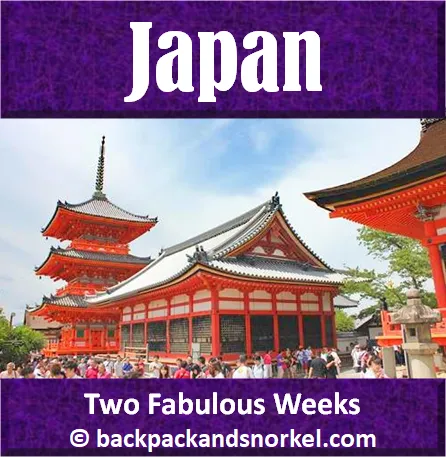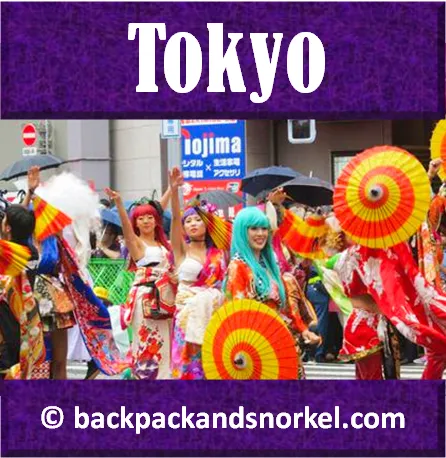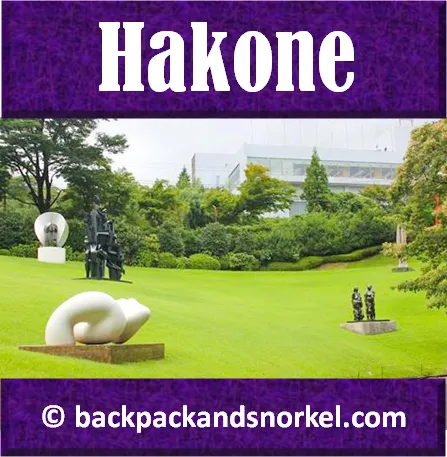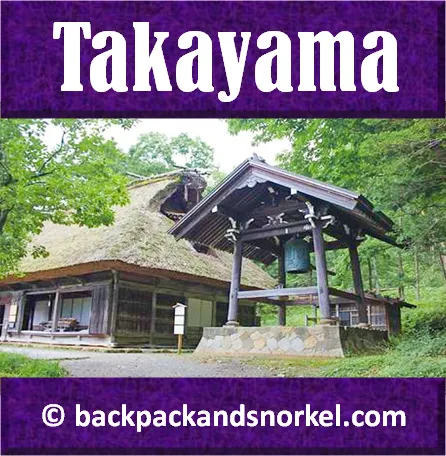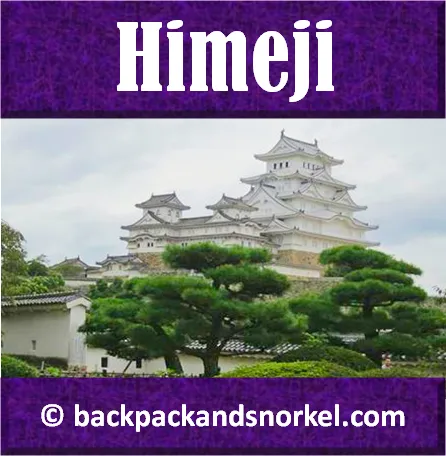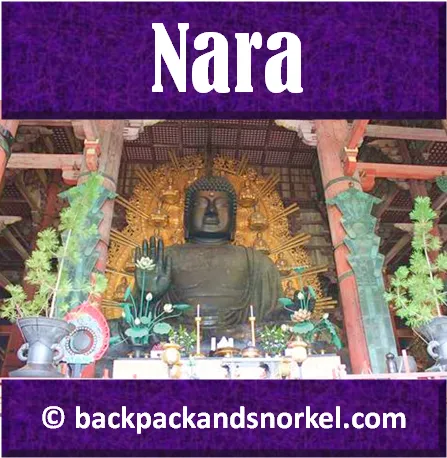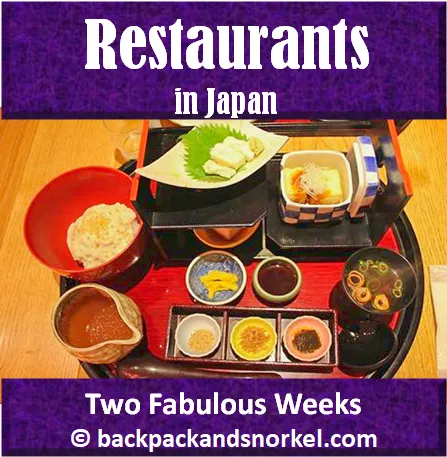Travel Guide for Kyoto - Japan Purple Travel Guide
We show you the best things to see in Kyoto and, as always, we provide lots of photos so you can decide where you want to go.
General Information about Kyoto 京都
The Kyoto area was likely settled before 10,000BC.
In 794, the city was called Heian-kyō ('tranquility and peace capital') and was chosen as the new seat of Japan's imperial court. It was constructed as a scaled replica of Chang'an, the Chinese Tang dynasty capital, in accordance with traditional Chinese feng shui. In the 11th century, the city was renamed Kyōto ("capital city"). Kyoto stayed the capital for almost 1,100 years until 1869, when the imperial court moved to Tokyo.
Kyoto suffered extensive destruction in the Ōnin War of 1467–1477 and went into an extended period of decline until the end of the 16th century when Kyoto was rebuilt.
The modern city of Kyoto was established on April 1, 1889.
During World War II, Kyoto was spared from large-scale destruction, preserving its cultural heritage.
Kyoto’s population is approx. 1.5 million. It is considered the cultural capital of Japan and is a major tourist destination due to its many Buddhist temples, Shinto shrines, palaces, and gardens. Many of which are UNESCO World Heritage Sites.
The climate that you can expect when you visit Kyoto is shown here:


Getting around in Kyoto
Kyoto is a busy place and taking a bus to destinations on the other side of the city can take a long time.
We used the Kyoto metro (website), which only has 2 lines, to do the longer distance traveling within Kyoto. For the most part, we took the Raku Bus (website) to get to our destinations and sometimes we combined the two.
Raku buses are special tourist buses that are operated by the city that specifically go to the main tourist attractions. Normal city buses are painted in a plain color and Raku Buses are more colorful.
There are three Raku Bus lines: Line 100 (white and pink buses), 101 (white and green buses) and 102 (white and yellow buses).

Depending on how many bus rides you want to take, you can either buy
1-day Kyoto bus pass which is good for all buses incl. Raku
combination Bus & metro 1-day ticket
one trip ticket
For most first-time visitors, the 1-day pass is likely going to be the best deal. You can buy this ticket at JR Kyoto station in the Tourist Information Center close to Shinkansen tracks.
You will need to validate the pass at the end (!) of your first trip in the machine next to the driver before you exit. After that you only show the pass to the driver.
You may be surprised that you validate the ticket at the end of your first ride. Here is the reason why:
When you board a bus in Kyoto, you must board it at one of the back doors. The front doors by the driver are only for exiting the bus. When you exit the bus, you either need to validate or show your day pass or have exact change. Buses in Kyoto do not provide change. So, if you don’t have exact change on you, then you have to get change at one of the machines at the bust stop where you board the bus or over-pay the bus driver.
The Raku buses are designed for tourists. All stops are announced in Japanese and English, so you don’t need to be worried that you miss your stop.
Raku Bus 100 (white and pink buses) leaves from station D1 at the bus terminal of the JR Kyoto station and Raku Bus 101 (white and green buses) leaves from B2.
IBIS Styles Kyoto Station (price & availability)
Unlike in Tokyo, where many attractions are clustered together, attractions in Kyoto are spread wide and far from each other. It was therefore important for us to be close to the Kyoto Metro and Raku Bus stop.
The IBIS Styles Kyoto Station hotel is right across the busy street from JR Kyoto Station and allowed us to quickly get where we wanted to go.
The hotel is in a prime location and has comparably low rates and rooms that are of good size, definitely not big, but sufficient. The staff is very nice and a yummy Japanese and western breakfast was included.
We could see JR Kyoto station from our hotel room.
The entrance of this hotel just leads you to an elevator that you need to take up to get to the lobby.


Self-Guided Tour 1 of Kyoto

- Kyoto JR Station, The Cube, Porta
- Kinkakuji Temple
- Ryoanji Temple
- Nijo Castle
- Imperial Palace
Here at Backpack and Snorkel Travel Guides, we typically promote self-guided walking tours.
But we realize that not everybody likes to walk by themselves in a foreign city. So, just in case that you rather go with ab guide: NO PROBLEM! Please see the free GuruWalk and paid Viator tours below.
free GuruWalk tours
paid Viator tours
Kinkakuji Temple
To get there from the IBIS hotel: Take the green K-Line metro from Kyoto Station (K11) to Kitaoji Station (K04) and Raku Bus 101 (you can take 102, too) to Kinkakuji Temple.
Kinkakuji Temple (‘Temple of the Golden Pavilion’) is an amazingly beautiful site to see, but beware, many other tourists know that too and will crowd the places where you get the best view on the golden temple. Unfortunately, you cannot go into the building, but you can walk around it and the pond that it is situated on.
The path starts near the golden building and then leads you through a nicely laid out garden to the exit.
Kinkakuji Temple is a Zen Buddhist temple and is one of 17 locations making up the Historic Monuments of Ancient Kyoto which are World Heritage Sites. There was originally a villa standing here that was purchased by shōgun Ashikaga Yoshimitsu in 1397 as a retirement retreat and transformed into the Kinkaku-ji complex with 13 buildings.
After Yoshimitsu died the building was converted into a Rinzai Zen temple by his son. All buildings in the complex except for the temple were destroyed in the Ōnin war (1467–1477). The temple was burned down in 1950 by a novice monk who then tried to commit suicide but was rescued and incarcerated.
The building that you see today dates back to 1955 when the temple was rebuilt. It is said that the reconstruction closely resembles the original, but some people doubt that the gold plating was as extensive as it is today.
So, why is the temple covered in gold in the first place? There are three main reasons:
gold was intended to mitigate and purify any pollution or negative thoughts and feelings towards death
gold is a status symbol
during the period that the temple was built (Muromachi period), visual excesses were fashionable. The golden color makes the temple stand out, especially when the sunlight if reflecting off the gold mirroring in the pond
- Kyoto JR Station
- Sanjusangendo Temple
- Matsubara Dori
- Kiyomizu Temple
- Sannen-zaka Steps
- Ninen-zaka Steps
- Yasaka Shrine
- Shijo Street
- Fushimi Inari-taisha Shrine
- On the west bank of the Kamo River is a pedestrian-only levee where you can rest with hundreds of other people and get away from the busy traffic on Shijo-dori
- Pontocho Alley 先斗町: Considered to be one of the most beautiful streets in Kyoto, this car-free street is lined with traditional stores and restaurants in traditional buildings. This area comes to life in the evening with its traditional lighting. Only some restaurants have English menus and English-speaking staff.
- Teramachi-dori 寺町通 and Shin Kyogoku 新京極 Shopping Arcades: Those are two covered pedestrian arcades lined with stores selling souvenirs, shoes, clothes, confectionary, souvenirs, and more.
- Kyoto JR Station, Bamboo Forest
- Himeji Castle
The golden temple is amazingly beautiful and we absolutely recommend it for a 1h visit.


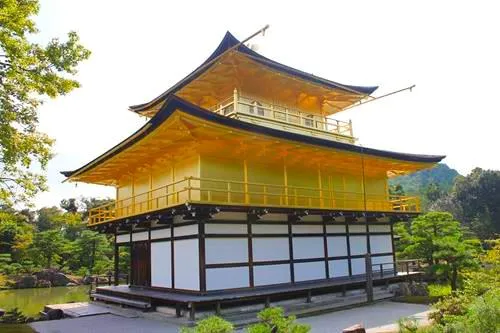

Ryoanji Temple
From Kinkakuji Temple, take bus line 59 to your next destination: Ryoanji Temple.
The Ryōan-ji temple (‘The Temple of the Dragon at Peace’) belongs to the Rinzai branch of Zen Buddhism and it was founded in 1450. It was burned down during the Ōnin War and rebuilt at the end of the century.
It is not clear when the garden that the temple is now famous for was constructed. It was first mentioned in 1680–1682. Originally, the garden was composed of nine big stones laid out to represent Tiger Cubs Crossing the Water. Today, the garden has 15 stones.
A fire destroyed the buildings in 1779 and the garden was rebuilt later that century. A picture of the rebuilt garden in 1799 showed the design that you see today.
The Ryōan-ji garden is considered one of the finest surviving examples of kare-sansui (‘dry landscape’).
It is 2,670 square feet (248 square meters) large and placed within it are fifteen stones of different sizes composed in five groups: one group of five stones, two groups of three, and two groups of two stones surrounded by white gravel, which is raked every day by the monks.. The stones are placed so that when looking at the garden from any angle only fourteen of the stones are visible. Apparently, one would be able to view the fifteenth stone only through attaining enlightenment.
Admission is charged to enter the temple, and the temple has not much else to offer besides the garden.
When you get there, you will see quite a few Japanese visitors sitting on the observation deck and staring at the rocks.
Well, we did not attain enlightenment and we considered this the lowlight of our otherwise fantastic Japan vacation.




Nijo Castle
Take bus 59 back to Kinkakuji Temple, change to Raku bus 101 and you will be on your way to Nijo Castle.
Nijo Castle was built in 1603 by Tokugawa Ieyasu, the founder of the Tokugawa Shogunate.
The castle is surrounded by two moats and consists of three distinct areas: Ninomaru Palace (1626), Honmaru Palace (1847), and two gardens. The castle complex covers 68 acres (27.5 hectares) of land of which 86,000 square feet (8,000 square meters) are occupied by buildings.
Nijo Castle is listed as a UNESCO World Heritage Site.
The castle contains 3,000 medieval paintings and almost 1,000 of those are classified as “Important Cultural Properties”.
Ninomaru Palace
The 36,000 square foot (3,300 square meters) Ninomaru Palace was added in 1626 by shogun Tokugawa Iemitsu, who was the grandson of Tokugawa Ieyasu.
It is almost entirely constructed of Hinoki cypress and consists of five interconnected buildings. The decoration includes elaborate wood carvings and lots of gold leaves designed to impress visitors of the power and wealth of the shōguns. The sliding doors and walls of each room are decorated with beautiful wall paintings.
One important security feature is the "nightingale floors" (uguisubari). Those are floors in the corridors that make noise when someone walks on them, alerting the shogun and his bodyguards that someone was approaching.
Karamon Gate
(‘Chinese Gate’, see photos below), originally set up at Fushimi Castle, is the main entrance of the Ninomaru Palace and its design is a symbol of power and authority.
Honmaru Palace
Honmaru Palace was added in 1847 Honmaru Palace and it was originally similar to Ninomaru Palace. The structure that you see today was built in 1894 and it consists of four parts: reception and entertainment rooms, living quarters, entrance halls and kitchen area which are connected by corridors and courtyards. The surface area is about 17,000 square feet (1,600 square meters) and today the palace displays paintings by several famous Japanese masters.
Gardens
The castle has several gardens including Japanese cherry and plum tree groves. The Ninomaru garden is located between the two main rings of fortifications, adjoining Ninomaru palace. The garden has a large pond with three islands, topiary pine trees and designed stone formations.




Imperial Palace
From Nijo Castle you can walk to the Imperial Palace.
Kyoto’s original imperial palace, the Heian Palace, was abandoned in the late 12th century. At that time, and unofficially before that time, this structure became the official Imperial Palace until the imperial court moved to Tokyo in 1869.
The palace stretches 4,300 ft (1,300 m) in the north-south direction and 2,300 ft (700 m) in the east-west direction.
The original palace has burned down numerous times and the structure that you see today dates back to the last reconstruction in 1855.
Fortunately, the Imperial Household Agency has abandoned the long-time practice of requiring advance registration if you wanted to visit the palace. You can now walk up to Seishomon Gate and enter the palace grounds for a self-guided tour. All buildings are off-limits, however.
There is an app that has information for guided tours and self-guided tours.

Source: The Imperial Household Agency website
(https://sankan.kunaicho.go.jp/english/guide/institution_kyoto.html)




Shopping near JR Kyoto Station
Take the metro back from Marutamachi Station (K07) to Kyoto Station (K11).
The Cube
The Cube is a 3-story underground shopping mall in the JR Kyoto station. The first floor and first underground floor (B1) have mostly confectionery and souvenir stores, while the second basement floor (B2) has ladies’ fashion boutiques and cosmetics stores. The opening times vary by store type and day of the week. Please see the bottom of the Cube’s website for more details.


Porta underground shopping mall
Porta is an underground shopping mall directly underneath Kyoto Bus Station. It connects with the Kyoto Subway Station and stores are open from 10am to 9pm.
Porta’s East Area has mostly souvenir and food stores, while in the West Area fashion stores and boutiques dominate. But you can also find bakeries, cafes, restaurants, books, cosmetics, souvenirs, and stationery.


This concludes day 1 in Kyoto.
Self-guided Tour 2 of Kyoto

Sanjusangendo Temple
Sanjūsangen-dō is a Buddhist temple of the Tendai sect that was founded in 1164 and its main attraction are the 1,001 life-size wooden statues of the 1,000-handed Kannon (each of them has only 25 arms), 28 standing attendants, statues of Fūjin (Japanese god of the wind; one of the oldest Shinto gods) and Raijin (god of lightning, thunder, and storms) and a big, seated statue of Thousand-armed Kannon. The building and most of the statues date from 1266, when the temple was rebuilt; only 124 statues were rescued when the original temple burned down in 1249.
The main deity of the 120m long temple is the Thousand-Armed Kannon (Sahasrabhuja-arya-avalokiteśvara). To the left and right of it stand 1,000 life-size statues of the Thousand-Armed Kannon in 10 rows and 50 columns. The statues are made from Japanese cypress wood and clad with gold leaf.
Around the 1000 Kannon statues stand 28 statues of guardian deities. There are also two famous statues of Fūjin and Raijin.
Unfortunately, no photography or videography is allowed inside the building, but you can buy books with photos for either 500 or 1,000 Yen in the souvenir store. Outside the main building is a small garden that you can walk through in 5-10min.
This is an amazing site and should not be missed.




Matsubara Dori, Busy Shopping Street near Kiyomizu Temple
Get back on Raku Bus 100 and exit at the Gojozaka stop which is at the bottom of the hill which, in theory, is a 10min walk to the temple. In reality, it will take you a lot longer to walk up this busy shopping street (Matsubara-dori), unless you have extraordinary sales-resistance.




Kiyomizu-dera Temple
At the end of Matsubara-dori, a very busy shopping pedestrian street, is Kiyomizu Temple (‘clear water’ or ‘pure water’ temple) which was founded in 778. The buildings that you presently see are from 1633.
This temple is known mostly for its nice views of Kyoto and the hills outside Kyoto and the fact that not a single nail was used in the entire structure.
The popular Japanese expression: ‘jump off the stage at Kiyomizu’, which is similar to the English expression ‘take the plunge’ refers to an Edo-period rumor that, if one were to survive a 43ft (13m) jump from the stage, one's wish would be granted. Apparently, 234 jumps were recorded of which 85.4% of those people survived. The practice was forbidden in 1872.
The main hall is built over a cliff and the large observation deck is supported by many long wooden pillars.
The main hall is painted dark brown but the rest of the campus is painted in bright orange, white and yellow/gold.
There is an admission fee to enter the main hall.
Underneath the main hall is Otowa waterfall, where water from three channels falls into a pond. Visitors are permitted to catch and drink the water that is rumored to have wish-granting powers.
The temple area is fairly large and has a good number of buildings. We really loved the orange painted buildings and we particularly enjoyed the walk to the orange pagoda that you can see nested in the hills from the main hall.
This path gets you the postcard-perfect views that are particularly stunning in fall when the leaves turn red. If you continue beyond the pagoda, you will come to the rear entrance which after another 10min walk will bring you to a small temple (admission fee at the time of writing: 100 Yen).
By the way, if you want to save money: There does not appear to be an admission fee when entering the temple area through the rear entrance.




Sannen-zaka Steps and Ninen-zaka Steps
Now trace back your steps on Matsubara-dori until you see the Sannenzaka Steps to your right.
Take the stairs downhill and enjoy some of the best-preserved wooden buildings in Kyoto, including many restaurants and stores on this pedestrian-only street.
Then continue down the Ninen-zaka steps and continue your way to Yasaka Shrine.
Legend says that, if you fall at Ninen-zaka, you will die within two years. If you fall at Sannen-zaka, you will die within three years.


Yasaka Shrine
Construction on Yasaka Shrine, formerly called Gion Shrine, which is a Shinto shrine, started in 656. The buildings that you see today date from 1654.
Kyoto's biggest procession, the Gion Matsuri, begins from Yasaka Shrine on July 17 every year since 869 when it was first held to ward off an epidemic that had hit the city.
On New Year day, the shrine attracts millions of worshipers for hatsu-mode, which are traditional Japanese New Year rituals and celebrations where worshipers come to take home a flame from the sacred fire to cook the first meal of the new year.




Shopping area along Shijo Street
From the shrine, walk west on Shijo-dori, cross the Kamo River and walk towards the intersection of Shijo-dori and Kawaramachi-dori which is one of the largest shopping districts in Kyoto.
Shijo Street on the Gion side before the river is characterized by small stores whereas after the river you will find the large Takashimaya, Marui and Daimaru department stores and several high-end fashion brands like Louis Vuitton.


Marui department store


Off Shijo-dori are some notable side streets running north. They are:



Fushimi Inari-taisha Shrine
At the Shijō Kawaramachi bus stop, board bus 17 (you can also take bus 4, 5, or 205) back to Kyoto Station. From there, get on a JR train to Inari Station which is only 2 stations/5min from Kyoto Station.
The first structures of Fushimi Inari-taisha were established in 711 and moved to its present location in 816. The main shrine structure sits at the base of mountain Inari. It consists of the main gate (‘tower gate’) and the main shrine and was built in 1499. There are 2.5 miles (4km) of trails up the mountain to many smaller shrines. If you have time, it takes about 2h to walk up.
Walking up the path lined with thousands of tori (gates) is the highlight of the shrine: the Senbon Torii. Some say there are more than 5,000 torii and others claim there are 10,000.
Each torii was donated by a Japanese business. The custom to donate a torii started during the Edo period (1603 – 1868) as a means to either get a wish become true or to thank for a wish that had come true.
The path leads to the inner shrine at mid-mountain and then eventually to the top of the mountain where, at 764ft (233m) elevation, there are tens of thousands of mounds for private worship.


This concludes your activities on day 2 in Kyoto.
Self-Guided Tour 3 of Kyoto and Himeji Castle
On Day 3 in Kyoto, you could see several more temples, but in order to prevent you from getting templed-out, we are choosing some very different sights for today.
We start with the Bamboo Forest in Kyoto and then we will take a train to Himeji to visit the famous and unique Himeji Castle.

Bamboo Forest or Arashiyama Bamboo Grove
The Bamboo Forest is a popular tourist attraction and mid-morning, you will see busloads of visitors arrive. Unfortunately, the Bamboo Forest is fairly small and you will have many people in your photos and no privacy. Therefore, the recommendation is to arrive as early in the morning as possible.
Take a train from Kyoto Station to Saga-Arashiyama Station and walk for about 10min to the forest entrance.
This is a natural bamboo forest in Arashiyama which is comprised mostly of Moso Bamboo. As of 2015, there is no admission fee anymore.
The path in the forest is short 650 ft (200 m) and you will get to the end before you know it and you will probably think there must be more. Unfortunately, there isn't.


Afterwards, go back to Kyoto Station and took a Shinkansen to Himeji to visit Himeji Castle.
Which part of Japan do you want to visit now?
Author: Rudy at Backpack and Snorkel
Bio: Owner of Backpack and Snorkel Travel Guides. We create in-depth guides to help you plan unforgettable vacations around the world.
Other popular Purple Travel Guides you may be interested in:
Like this Backpack and Snorkel Purple Travel Guide? Pin these for later:




